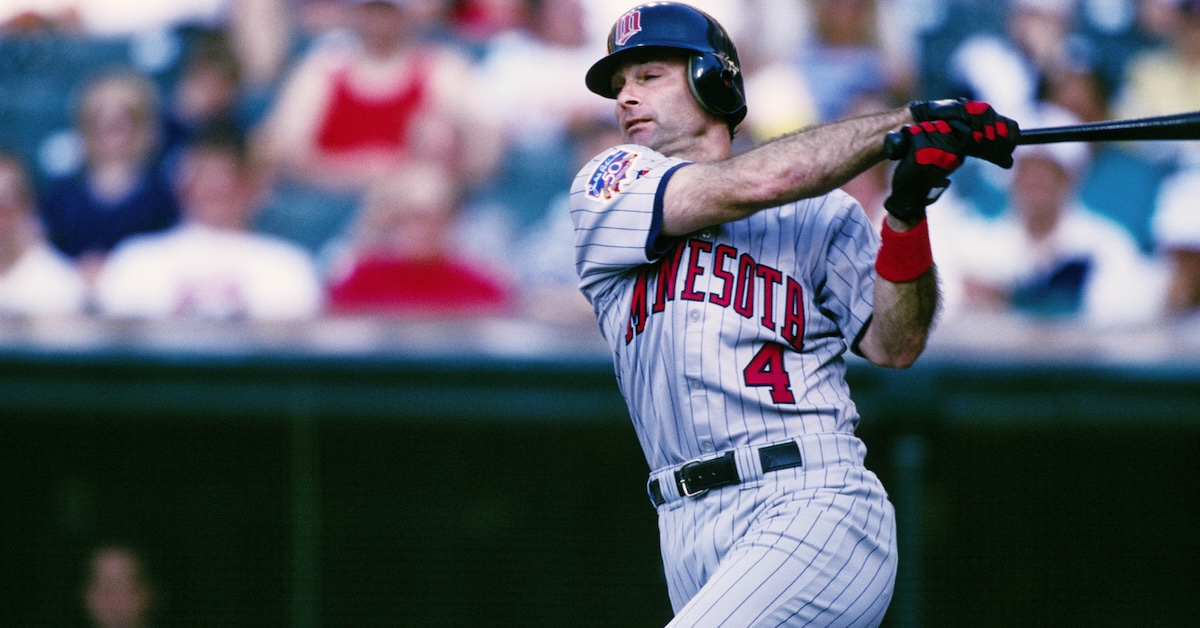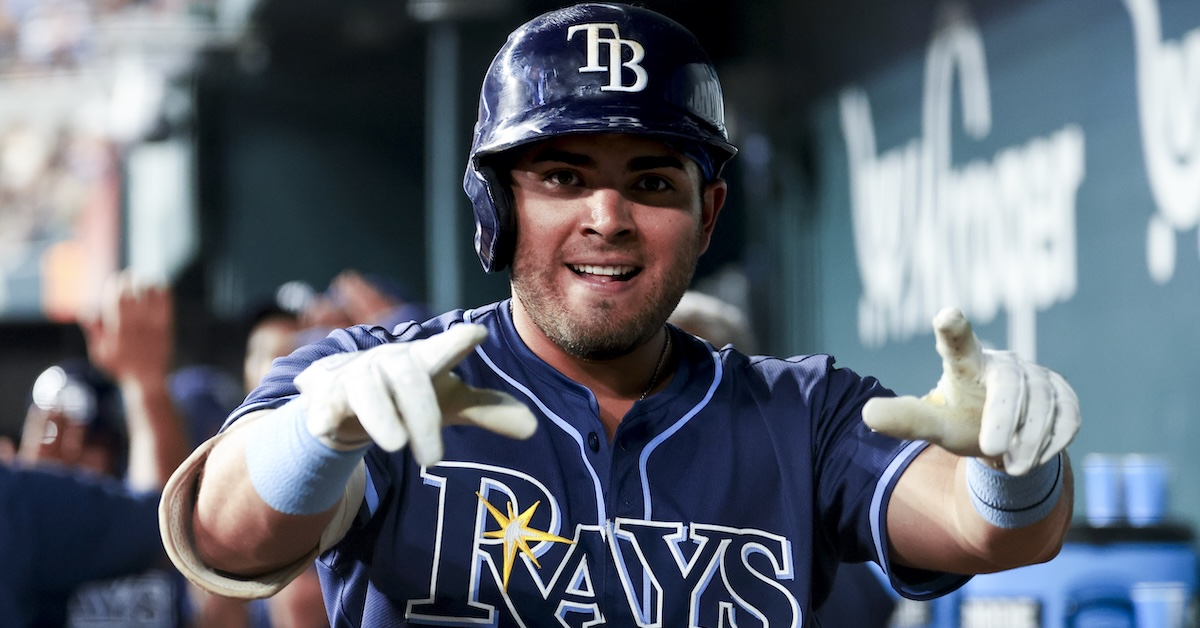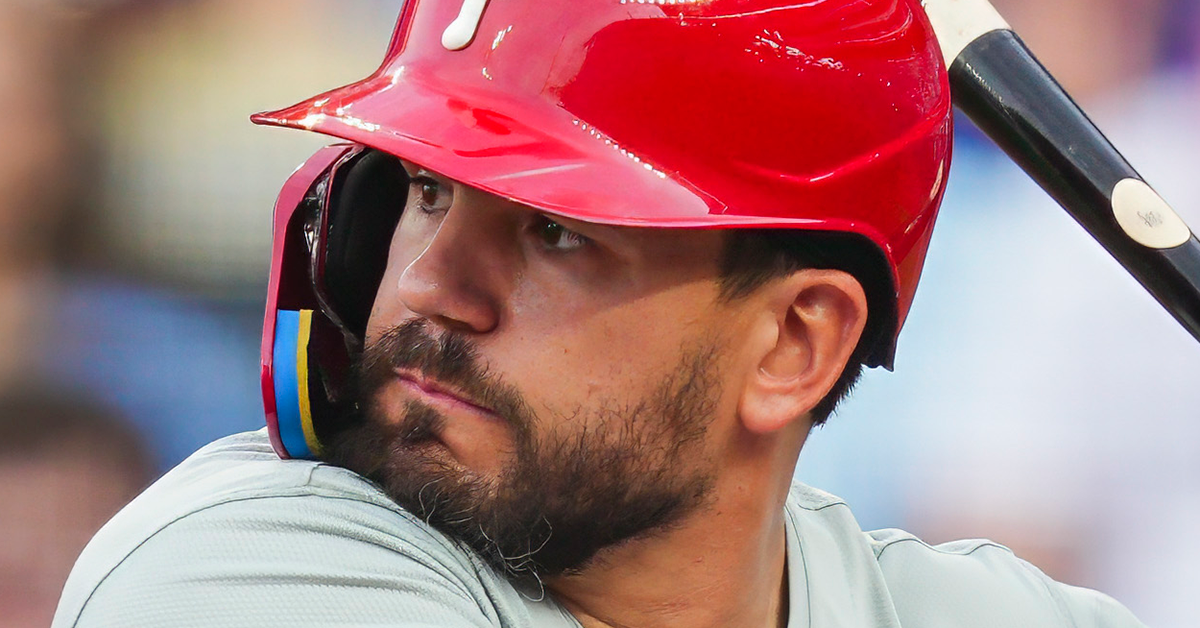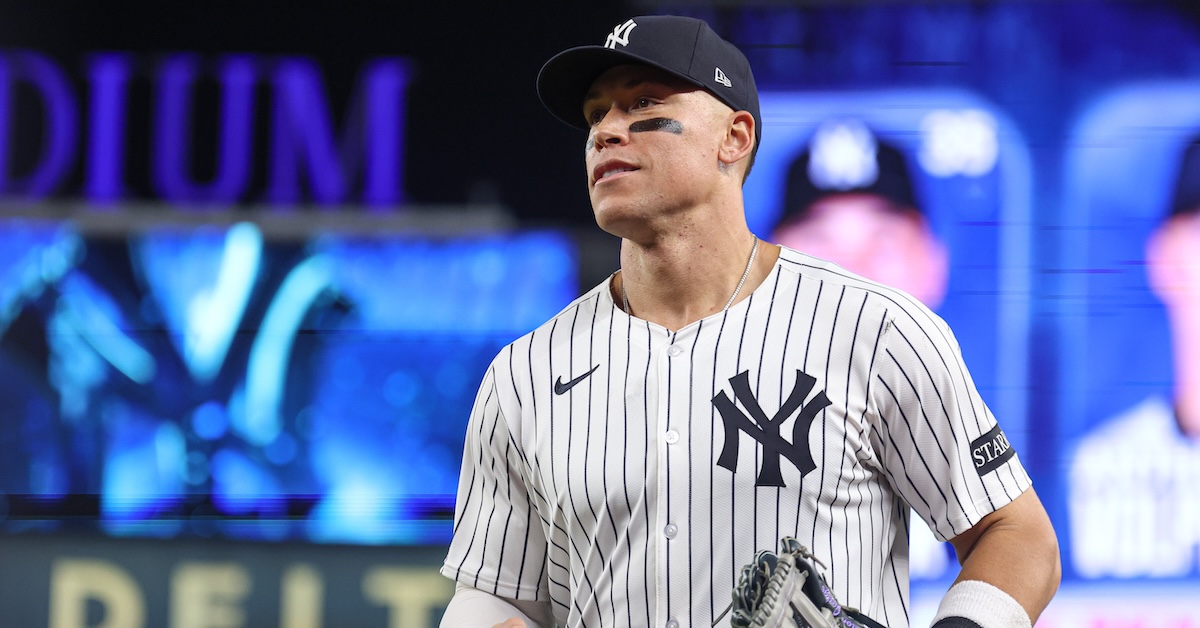
We’re now a quarter of the way through the regular season, and even though the playoff races have largely taken shape, there’s still plenty of time for some of the early disappointments to get things right. Last week, it was the Twins and Cardinals who caught fire with matching eight-game winning streaks.
Last year, we revamped our power rankings using a modified Elo rating system. If you’re familiar with chess rankings or FiveThirtyEight’s defunct sports section, you’ll know that Elo is an elegant solution that measures teams’ relative strength and is very reactive to recent performance. To avoid overweighting recent results during the season, we weigh each team’s raw Elo rank using our coin flip playoff odds (specifically, we regress the playoff odds by 50% and weigh those against the raw Elo ranking, increasing in weight as the season progresses to a maximum of 25%). The weighted Elo ranks are then displayed as “Power Score” in the tables below. As the best and worst teams sort themselves out throughout the season, they’ll filter to the top and bottom of the rankings, while the exercise will remain reactive to hot streaks or cold snaps.
First up are the full rankings, presented in a sortable table. Below that, I’ve grouped the teams into tiers with comments on a handful of clubs. You’ll notice that the official ordinal rankings don’t always match the tiers — there are times where I take editorial liberties when grouping teams together — but generally, the ordering is consistent. One thing to note: The playoff odds listed in the tables below are our standard Depth Charts odds, not the coin flip odds that are used in the ranking formula.
Complete Power Rankings
| Rank |
Team |
Record |
Elo |
Opponent Elo |
Playoff Odds |
Power Score |
Δ |
| 1 |
Dodgers |
27-14 |
1601 |
1499 |
97.7% |
1603 |
0 |
| 2 |
Phillies |
24-16 |
1568 |
1509 |
81.0% |
1568 |
5 |
| 3 |
Mets |
26-15 |
1562 |
1493 |
83.1% |
1565 |
3 |
| 4 |
Tigers |
26-15 |
1551 |
1482 |
85.4% |
1555 |
1 |
| 5 |
Cubs |
23-18 |
1548 |
1541 |
64.7% |
1546 |
-3 |
| 6 |
Padres |
25-14 |
1541 |
1488 |
62.5% |
1545 |
-2 |
| 7 |
Yankees |
23-17 |
1542 |
1503 |
88.4% |
1542 |
3 |
| 8 |
Mariners |
22-17 |
1537 |
1501 |
73.0% |
1536 |
-5 |
| 9 |
Royals |
24-18 |
1530 |
1477 |
52.8% |
1531 |
4 |
| 10 |
Guardians |
23-17 |
1523 |
1492 |
38.9% |
1524 |
1 |
| 11 |
Diamondbacks |
21-20 |
1530 |
1523 |
46.2% |
1524 |
1 |
| 12 |
Cardinals |
22-19 |
1526 |
1504 |
29.5% |
1523 |
9 |
| 13 |
Twins |
21-20 |
1528 |
1486 |
50.1% |
1523 |
10 |
| 14 |
Giants |
24-17 |
1520 |
1497 |
46.6% |
1522 |
-6 |
| 15 |
Braves |
19-21 |
1530 |
1499 |
60.9% |
1522 |
-6 |
| 16 |
Red Sox |
22-20 |
1514 |
1484 |
48.7% |
1511 |
2 |
| 17 |
Astros |
20-19 |
1512 |
1496 |
50.9% |
1508 |
-3 |
| 18 |
Blue Jays |
20-20 |
1512 |
1512 |
34.8% |
1507 |
1 |
| 19 |
Rangers |
20-21 |
1506 |
1518 |
38.3% |
1500 |
-3 |
| 20 |
Athletics |
21-20 |
1490 |
1487 |
15.9% |
1488 |
-5 |
| 21 |
Rays |
18-22 |
1489 |
1511 |
14.3% |
1482 |
-4 |
| 22 |
Brewers |
20-21 |
1486 |
1486 |
18.6% |
1482 |
0 |
| 23 |
Reds |
20-22 |
1471 |
1487 |
7.7% |
1466 |
-3 |
| 24 |
Orioles |
15-24 |
1457 |
1500 |
7.8% |
1448 |
0 |
| 25 |
Nationals |
17-24 |
1443 |
1508 |
0.3% |
1435 |
0 |
| 26 |
Angels |
16-23 |
1436 |
1492 |
0.8% |
1430 |
0 |
| 27 |
Pirates |
14-27 |
1431 |
1504 |
1.1% |
1421 |
1 |
| 28 |
Marlins |
15-24 |
1423 |
1516 |
0.1% |
1416 |
-1 |
| 29 |
White Sox |
12-29 |
1365 |
1490 |
0.0% |
1358 |
0 |
| 30 |
Rockies |
7-33 |
1328 |
1520 |
0.0% |
1324 |
0 |
…
Tier 1 – The Dodgers
| Team |
Record |
Elo |
Opponent Elo |
Playoff Odds |
Power Score |
| Dodgers |
27-14 |
1601 |
1499 |
97.7% |
1603 |
The Dodgers split a big four-game series against the Diamondbacks last weekend, and Friday night’s game was an especially wild affair. There were four lead changes, and Los Angeles won after scoring six runs in the ninth inning, a rally that was capped off by a go-ahead three-run bomb from Shohei Ohtani, his fourth home run of the week. Freddie Freeman also hit four homers last week and collected 10 other hits. The Dodgers’ roster was depleted even further when Teoscar Hernández and Evan Phillips hit the IL on Tuesday — they now have 15 players on the IL — but they’ve continued to prove they have enough talent to maintain their spot as the top team in baseball.
Tier 2 – On the Cusp of Greatness
| Team |
Record |
Elo |
Opponent Elo |
Playoff Odds |
Power Score |
| Phillies |
24-16 |
1568 |
1509 |
81.0% |
1568 |
| Mets |
26-15 |
1562 |
1493 |
83.1% |
1565 |
The Mets took two out of three games in both of their series last week, but the Phillies did them one better, going 5-1 on their roadtrip through Tampa Bay and Cleveland. Suddenly, the NL East looks very tight at the top. New York is still in first place, but its hold on the division is now just 1.5 games, down from five as recently as April 26. The good news for the Mets is that, even as that gap has narrowed, Juan Soto’s bat has woken up; he blasted three home runs last week, the same amount he hit in all of April, and he’s up to five dingers since the calendar flipped to May. The Mets have a big subway series against the Yankees lined up for this weekend as they try to cling to their division lead. Meanwhile, the Phillies return home to host the surging Cardinals before the Pirates come to Philly for an intrastate rivalry series over the weekend.
Tier 3 – Solid Contenders
| Team |
Record |
Elo |
Opponent Elo |
Playoff Odds |
Power Score |
| Tigers |
26-15 |
1551 |
1482 |
85.4% |
1555 |
| Cubs |
23-18 |
1548 |
1541 |
64.7% |
1546 |
| Padres |
25-14 |
1541 |
1488 |
62.5% |
1545 |
| Yankees |
23-17 |
1542 |
1503 |
88.4% |
1542 |
| Mariners |
22-17 |
1537 |
1501 |
73.0% |
1536 |
| Royals |
24-18 |
1530 |
1477 |
52.8% |
1531 |
So far, the Cubs have faced the toughest schedule in the majors by a pretty significant margin, which makes their 23-18 record all the more impressive. Thankfully, they won’t face another opponent with a record over .500 until early June, as their series against the Marlins, White Sox, Reds, and Rockies will take them through the rest of the month. Chicago was already without Justin Steele and Javier Assad when Shota Imanaga landed on the IL with a hamstring strain early last week. In response, the team called up its top pitching prospect, Cade Horton, to make his major league debut over the weekend, using him as the bulk guy in Saturday’s 6-5 win over the Mets. The easier schedule should alleviate some of the pressure on the patchwork rotation, though the Cubs will definitely want to find some reinforcements before the dog days of summer set in.
The Yankees snapped the Padres’ six-game winning streak on Tuesday, though San Diego got back on track with two wins against the Rockies over the weekend, including a 21-0 drubbing on Saturday. As for New York, the offense carried the team through two series wins last week. Aaron Judge went hitless in two games early in the week but got his bat going again against the A’s in Sacramento. He blasted two home runs on Saturday and collected four hits on Sunday, pushing his batting average back over .400. He enters Monday’s series opener in Seattle slashing .409/.494/.779 with 14 home runs, a 254 wRC+ and 3.8 WAR.
Speaking of the Mariners, their streak of nine consecutive series wins was snapped over weekend when they were swept at home by the Blue Jays. They’re still leading the AL West, but they have two difficult series ahead of them this week: the aforementioned matchup with the Yankees, followed up a three-game set in San Diego.
Over in the AL Central, the Tigers continue to hold onto the best record in the AL, but they dropped their weekend series to the Rangers. The Royals entered their weekend series against the Red Sox on a seven-game winning streak with five straight series wins before Boston’s pitching slowed them down. Kansas City lost on Saturday and Sunday and was held to just one run in each game.
Tier 4 – The Melee
| Team |
Record |
Elo |
Opponent Elo |
Playoff Odds |
Power Score |
| Guardians |
23-17 |
1523 |
1492 |
38.9% |
1524 |
| Diamondbacks |
21-20 |
1530 |
1523 |
46.2% |
1524 |
| Cardinals |
22-19 |
1526 |
1504 |
29.5% |
1523 |
| Twins |
21-20 |
1528 |
1486 |
50.1% |
1523 |
| Giants |
24-17 |
1520 |
1497 |
46.6% |
1522 |
| Braves |
19-21 |
1530 |
1499 |
60.9% |
1522 |
The Cardinals and Twins are the hottest teams in baseball right now, with each club carrying eight-game winning streaks into the new week after struggling over the first month of the season. Ten days ago, St. Louis was six games out of first place and five games under .500; now the club is just a game behind the Cubs in the NL Central. Pitching has led the way for the Cardinals during their ascent, as they allowed a total of seven runs last week. Matthew Liberatore’s long-awaited breakout is the big story; he outpitched Paul Skenes in a seven-inning gem on Tuesday, giving up one run while striking out eight.
Meanwhile in Minnesota, Royce Lewis and Willi Castro were both activated off the IL last week, giving the roster a much needed boost. Likewise, it’s the pitching that’s driving their success; the Twins held opponents to two or fewer runs in their first five games last week before Sunday’s 7-6 walk-off win over the Giants. The offense still hasn’t really clicked, but their excellent run prevention has allowed them to post a +19 run differential despite sitting just a game over .500. Unlike the Cardinals, though, the Twins are still in fourth place and five games out of first because the AL Central — featuring the Tigers, who have the best record in the AL, as well as the Royals and Guardians — is one of the most competitive divisions in baseball.
Tier 5 – The Muddy Middle
| Team |
Record |
Elo |
Opponent Elo |
Playoff Odds |
Power Score |
| Red Sox |
22-20 |
1514 |
1484 |
48.7% |
1511 |
| Astros |
20-19 |
1512 |
1496 |
50.9% |
1508 |
| Blue Jays |
20-20 |
1512 |
1512 |
34.8% |
1507 |
| Rangers |
20-21 |
1506 |
1518 |
38.3% |
1500 |
| Athletics |
21-20 |
1490 |
1487 |
15.9% |
1488 |
| Rays |
18-22 |
1489 |
1511 |
14.3% |
1482 |
In the wake of Triston Casas’s season-ending knee injury, the Red Sox unnecessarily walked into another ugly spat with their franchise cornerstone last week, when chief baseball officer Craig Breslow asked Rafael Devers if he would be open to playing first base. It’s not an outrageous ask from a baseball perspective, but the problem is the lack of clear communication, both public and private, between Boston’s front office and its most important player. Thankfully, none of this has affected Devers at the plate; he collected 10 hits last week, including two home runs, and his season wRC+ is now up to 146.
The Astros placed Yordan Alvarez on the IL early last week with some inflammation in his hand. Then, on Saturday, Jose Altuve exited the game early with hamstring tightness. Neither injury is considered serious, but it’s just another hurdle Houston has to overcome this year. The Astros are virtually tied with the Athletics in the AL West standings, two games behind the Mariners and a game ahead of the Rangers. Both Texas teams went 3-3 last week, while the A’s dropped both their series against the Mariners and Yankees.
Tier 6 – Adrift in the NL Central
| Team |
Record |
Elo |
Opponent Elo |
Playoff Odds |
Power Score |
| Brewers |
20-21 |
1486 |
1486 |
18.6% |
1482 |
| Reds |
20-22 |
1471 |
1487 |
7.7% |
1466 |
The Cardinals’ hot streak has pushed the Brewers and Reds down a notch in the NL Central standings. Jackson Chourio is clearly talented, but his hyper-aggressive approach this season has led to inconsistent results. He’s supposed to be leading Milwaukee’s offense, but no one is really hitting right now. The pitching has been good considering all the injuries the staff has had to overcome — Brandon Woodruff and Aaron Civale are both nearing their returns — but a team that can’t score runs consistently won’t go anywhere.
For Cincinnati, a rash of injuries has derailed any success the team might have enjoyed earlier in the season. Hunter Greene, Noelvi Marte, and Jake Fraley all hit the IL last week, though thankfully Austin Hays returned from his own injury on Friday. After the Reds had scored just 10 runs across their previous six games, they erupted for 13 runs against the Astros on Saturday. Of course, they were shut out a day later; their offensive woes won’t be solved that easily.
Tier 7 – No Man’s Land
| Team |
Record |
Elo |
Opponent Elo |
Playoff Odds |
Power Score |
| Orioles |
15-24 |
1457 |
1500 |
7.8% |
1448 |
| Nationals |
17-24 |
1443 |
1508 |
0.3% |
1435 |
| Angels |
16-23 |
1436 |
1492 |
0.8% |
1430 |
After getting swept by the Twins, the Orioles bounced back with a series win against the Angels last weekend. If you’re looking for signs of hope, Zach Eflin was activated off the IL on Sunday and looked pretty good in a five-inning outing. On the offensive side of things, Jackson Holliday is showing some signs of life; he’s collected a pair of home runs and nine hits this month.
Tier 8 – Hope Deferred
| Team |
Record |
Elo |
Opponent Elo |
Playoff Odds |
Power Score |
| Pirates |
14-27 |
1431 |
1504 |
1.1% |
1421 |
| Marlins |
15-24 |
1423 |
1516 |
0.1% |
1416 |
| White Sox |
12-29 |
1365 |
1490 |
0.0% |
1358 |
| Rockies |
7-33 |
1328 |
1520 |
0.0% |
1324 |
Both the Pirates and Rockies fired their managers last week, though neither Derek Shelton nor Bud Black were to blame for the struggles of their respective teams. Instead, the two managers are just the latest scapegoats for two beleaguered franchises going nowhere. At least Pittsburgh has some excellent pitching to witness every few days, with some more exciting prospects on the way. The situation in Colorado is much more bleak. The Rockies allowed a whopping 66 runs last week. On Thursday, they lost both games of a doubleheader by a combined score of 21-3, and somehow things got worse from there — they needed only one game on Saturday against the Padres to surrender 21 more runs. Final score: 21-0. Ouch.








